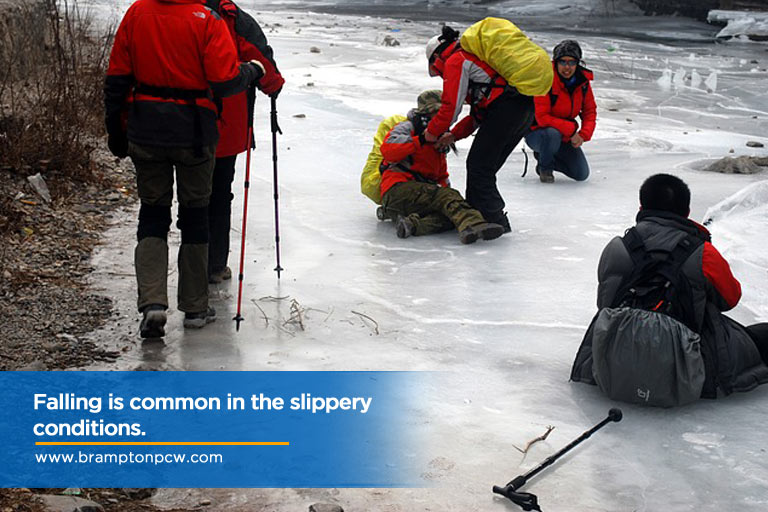When fall hits, temperatures drop. Bones chill. Muscles seize. We bundle up, but sometimes old aches and pains “talk” to us. Next come the flurries, freezing temperatures, snowstorms, ice, sleet… and the (sometimes) inevitable slips and falls.
In Canada, 25% of serious slip-and-fall injuries occur during the winter months. The reason is obvious: ice, slush, and water create ground surfaces that are extremely slick and difficult to navigate. When our faces are buried in cell phones and mobile devices while we walk, we are more distracted than we used to be in the past. Injuries caused by falling are the most common reason for hospitalization in this country. In 2017 alone, there were about 1,800 emergency room visits and 417 hospital stays due to accidental falls.
Injuries from falls are such a serious problem that researchers at the Toronto Rehabilitation Institute are studying why people fall in the winter and how to avoid such slips. Working in an enclosed indoor environment (called “WinterLab”) they test clothing, boots, wheelchairs, and walkers to find ways to prevent falling during freezing temperatures. They have already found some helpful conclusions about how to keep safe during the chilly months. They suggest building sloped curbs so wheelchairs (or assisted walking devices) won’t slip as easily, and designing special boots that grip the ground more efficiently.
Experts suggest the following tips to prevent injury on slippery surfaces:
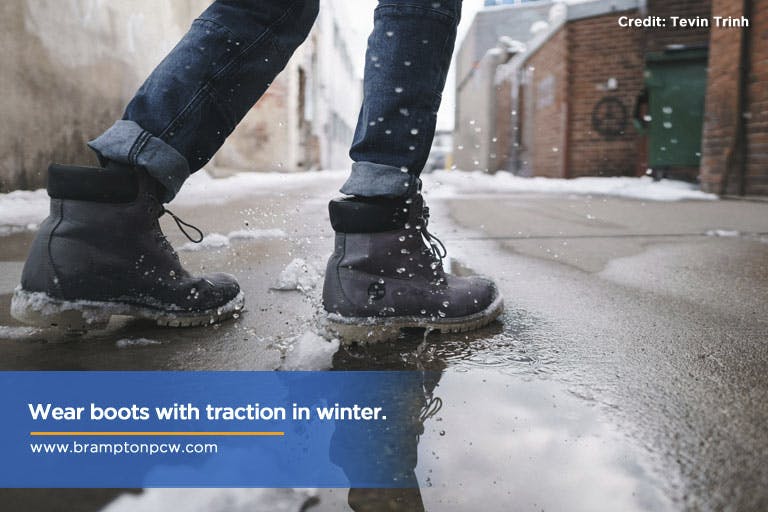
Choose footwear carefully.
Many falls are caused by wearing the wrong kind of shoe, so choosing proper winter footwear is important. Boots (specifically ones with rugged soles) are best because they give the most traction when walking on ice or snow. According to Don Voaklander, professor and director at the University of Alberta’s Injury Prevention Centre, “The treads on your boots should have the same qualities you find in your winter tires. Look for soft, flexible soles that will grip icy, uneven surfaces.”
High heels are not recommended for everyday walking in winter conditions. Cleats are also not a good choice, so save those for hiking and outdoor running. Look for shoes with flat, rubber soles because they offer better traction than leather. If you need to wear dress shoes or heels, carry them with you and change footwear when you get to your destination. It may seem like extra effort, but it will decrease the possibility of being injured in a fall.
Walk slowly.
Walking slowly on ice and snow provides much more control over body movement, and it makes it more likely that you’ll catch yourself if you start to slide. You will be more stable and have better control over your center of gravity. If you’re walking somewhere particularly treacherous, try shuffling or doing “the penguin.” (Here’s more on that…)
Do the “penguin.”
A recommended style of walking that has proven to keep people steady and prevent falls is called “the penguin.” The idea is to imitate the way a penguin walks, with all of your weight centered over your feet. Take short steps (almost like shuffling) and slowly move forward, keeping arms close to your body.
Walk with your head high -- look where you’re going.
Walking while daydreaming (or texting) can be risky in winter weather. Many accidents happen because people are not aware of their surroundings. An unexpected icy patch or a clump of snow could cause a fall when we are not paying attention. Particularly during the snowy months, walk with your head up and look where you’re going.
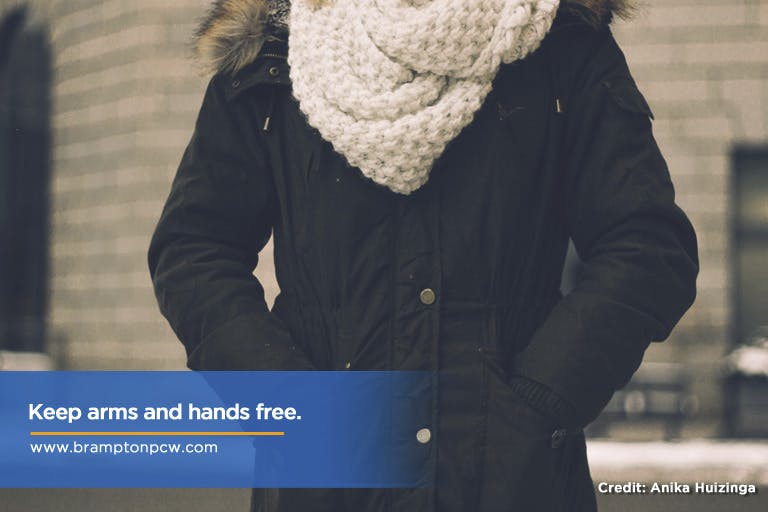
Avoid putting hands in your pockets. Walking with your hands in your pockets is risky. You want your hands and arms free so that if you slip, you can quickly attempt to balance yourself. If you do fall, however, tuck in your hands and attempt to fall on your side to absorb the impact. It’s like a “tuck and roll.” Tuck your head and let the fleshiest part of your body take the majority of the hit. The idea is to roll with the fall, not fight against it.
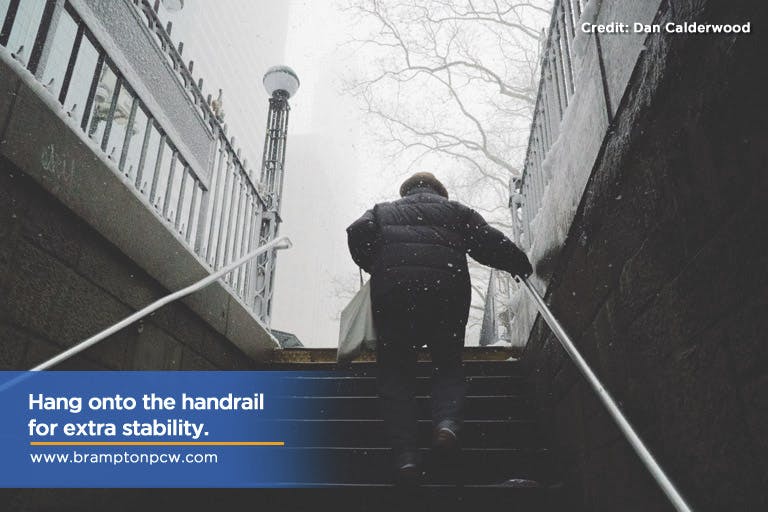
Hang onto handrails.
Using the handrail on stairs or walkways is helpful. There’s a greater chance you’ll regain your balance if you start to fall. Handrails exist as a safety feature and provide extra stability -- use them.
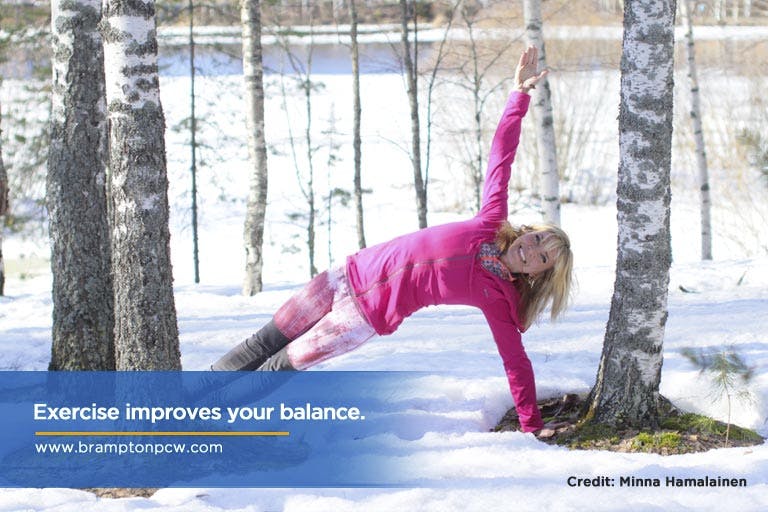
Exercising and stretching strengthens muscles and improves balance and flexibility. Exercises that are especially good for this purpose include swimming, yoga, leg extensions, toe stands, and knee curls.
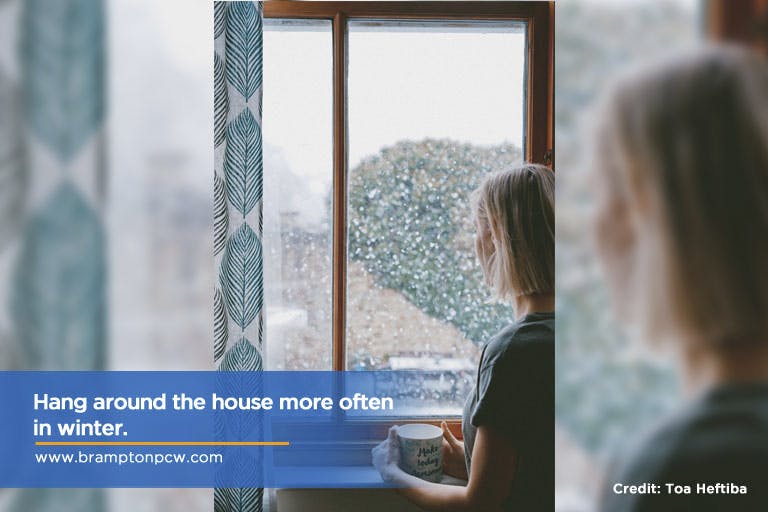
Stay home if you can.
Avoiding slick or snowy surfaces altogether is another preventative measure, but it may not always be an option, especially if you do not own a vehicle or need to shovel your sidewalks. If you can, try to stay close to home when weather is particularly bad, especially during very icy conditions.
Watch indoor floors for wet patches.
Remember that water from snowy and icy boots and shoes melt inside warmer temperatures. If you’re in an area where people don’t remove their shoes at the door, take extra precaution. If you work in a place where many people walk on tile or polished floors, ask if a mat or runner can be put down to prevent slip and fall accidents.
Get your eyeglass prescription checked.
Surprisingly, many falls happen because a person’s glasses are out of date. Clear vision is essential for walking safely -- regardless of the weather. Get your prescription checked before we get into the depths of the winter months.
Use ice remover/sand on the driveway and outside of your house.
Putting ice remover, kitty litter, or sand on the driveway and walkways around your house can be a good safety measure. In some cities and municipalities require homeowners to remove snow and ice from the sidewalks surrounding their properties. While salt may seem like a quick fix, it can melt snow and ice that only re-freezes to become more treacherous. Consider other more eco-friendly alternatives like sand and kitty litter to prevent pedestrians and visitors from slipping.
We hope these tips will ensure your safety and prevent painful injury so you can enjoy your winter without pain and limited mobility.
At Brampton Physiocare & Wellness Clinic, our team of professionals is dedicated to providing caring therapy and rehabilitation services. With a range of modalities, including physiotherapy, chiropractic care, massage therapy, let us help you get back on your feet. Give us a call at (905) 497-1311 to schedule an appointment.

